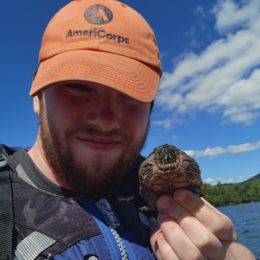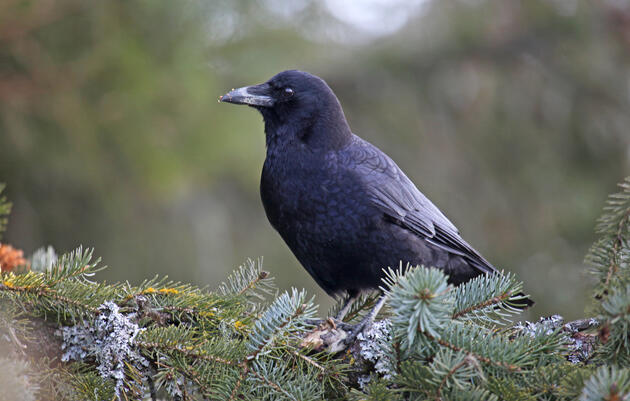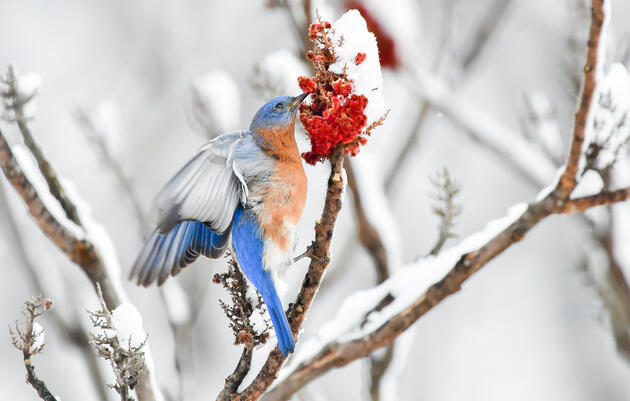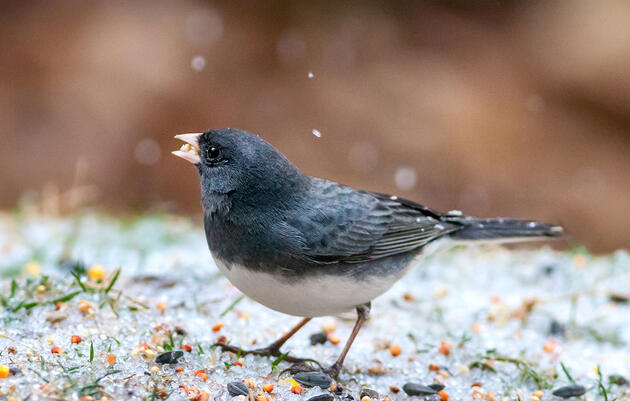Now that we’ve gotten more than a few dustings of snow and sparsely-leafed hills abound across Vermont, it is safe to say that we are fast approaching the winter season. While you and I can bundle up with our coats, hats, mittens, and scarves, or perhaps nestle down in front of the fire from an old wood stove, the birds which we love so dearly don’t have these luxuries. So how do these fascinating creatures keep from turning into bird popsicles (bird-sicles) when temperatures fall?
Migration
Feathers
Have you ever picked up a fallen feather on the ground and noticed that it is fluffier towards its base? These feathers serve an important role in temperature regulation. Birds can stand up their body feathers with tiny muscles in their skin (sort of like what happens when you get goosebumps on your arms), which makes them puff up. With their feathers stood up, the fluffy (or downy) parts of their feathers are able to trap more body heat and keep them warmer. You can think of this adaptation as having a built-in down coat! Air is a powerful insulator, which is why animals are able to live in the subnivean zone beneath the snowpack (90-95% air) and stay warm all winter. Birds use the same principle with their feathers.
Food
If you have a bird feeder at home, you’ll likely stock it full of seeds and nuts over the winter. Why? Because these tasty treats are just what the birds who stay up north for winter need. Packed with healthy fats and proteins, seeds and nuts are full of energy which will help birds stay active in warm in the cold. Even if bird feeders aren’t around, many birds will still seek out these energy-rich foods from native plants that hold onto seeds or berries all winter long. If you’re interested in supporting birds food and shelter needs all year long, consider planting native in your yard using Audubon’s Plants for Birds Database tool. While species such as the Black-capped Chickadee feed mostly on insects during the summer when they are abundant, they shift their diet to include seeds as winter approaches, feasting until they get fattened up to survive the cold.
So while our feathered friends stay toasty warm in a number of ways this winter, you can stay warm indoors with a nice cup of hot cocoa by the fire. Stay warm, stay safe, and enjoy winter!











